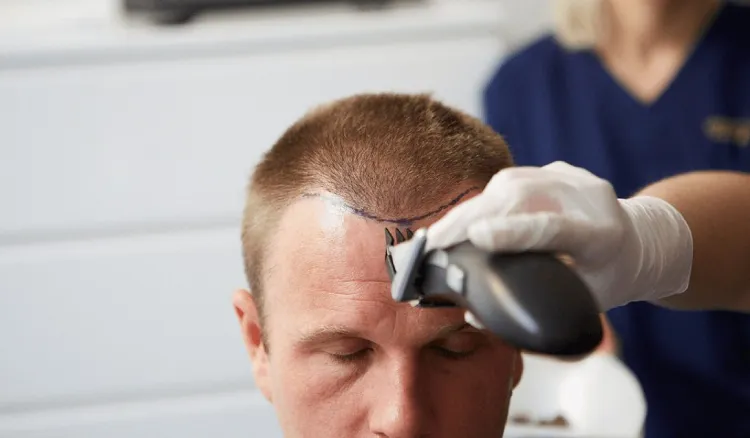- +1 630 974 1400
- info@oakbrookhair.com

A hair transplant is a surgical procedure that involves moving hair follicles from one part of the body, known as the donor site, to a bald or balding part of the body, known as the recipient site. This procedure is primarily used to treat male pattern baldness but is also effective for women experiencing hair loss.

FUE is a minimally invasive hair transplant technique where individual hair follicles are extracted from the donor area and transplanted to the recipient area. This method leaves tiny, nearly undetectable scars and has a quicker recovery time compared to other methods.

FUT, also known as strip surgery, involves removing a strip of scalp from the donor area, which is then divided into individual follicular units and transplanted to the recipient area. This method is suitable for patients requiring a large number of grafts.
Hair transplants can benefit individuals experiencing various types of hair loss, including:
Male Pattern Baldness: The most common type of hair loss in men, characterized by a receding hairline and thinning at the crown.
Female Pattern Baldness: Thinning hair on the top-central portion of the head, often with a widening part
Trauma or Surgery: Hair loss resulting from burns, accidents, or surgical scars.
Cosmetic Enhancements: Improving the density of eyebrows, beard, or mustache.


Step-by-Step Guide:
Consultation: Discuss your hair restoration goals and medical history with our expert team.
Designing the Hairline: A personalized plan is created, considering your facial features and hairline preferences.
Extraction: Hair follicles are extracted from the donor area using either FUE or FUT techniques.
Preparation: The follicles are prepared for transplantation.
Transplantation: The prepared follicles are implanted into the recipient area.
Recovery: Post-procedure care and guidelines are provided to ensure optimal healing and results.
Hair transplants offer several benefits, including:
Natural Results:
Transplanted hair looks and feels natural as it is your own hair.
Permanent Solution:Hair transplants provide a long-term solution to hair loss.
Improved Appearance:
Restored hair can significantly improve your appearance and boost your confidence.
Like any surgical procedure, hair transplants come with potential risks, including:
Infection:
As with any surgery, there is a risk of infection.
Scarring:
While minimal with FUE, some scarring can occur with FUT.
Shock Loss:Temporary hair loss in the transplanted area, which typically regrows.
View our gallery of before and after photos to see the transformative results our patients have achieved with hair transplants. Each photo showcases the natural-looking outcomes and restored confidence that our treatments provide.
The duration of the hair transplant procedure depends on the number of grafts being transplanted, but it typically takes between 4 to 8 hours.
Most patients experience minimal discomfort during the hair transplant procedure, as local anesthesia is used to numb the donor and recipient areas.
New hair growth can be seen as early as 3 months post-procedure, with full results visible after 12 months.


Stay updated with our latest news and offers.
Sign up for our newsletter.

